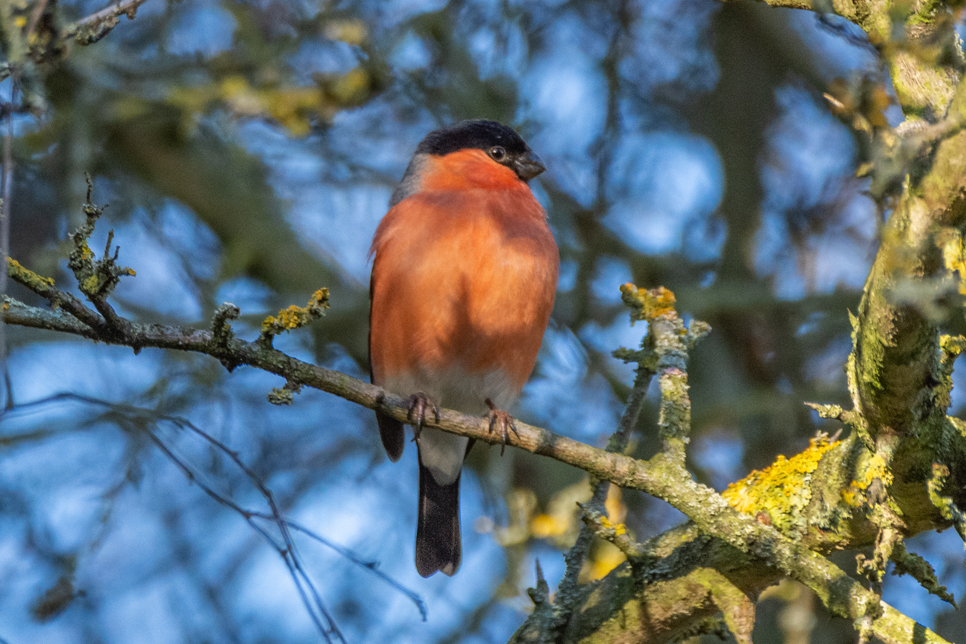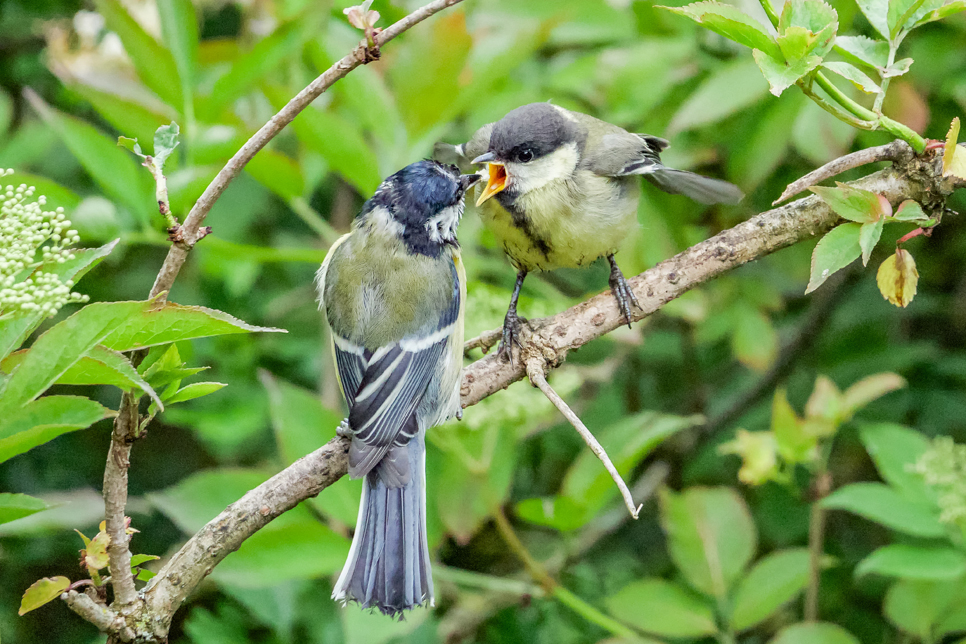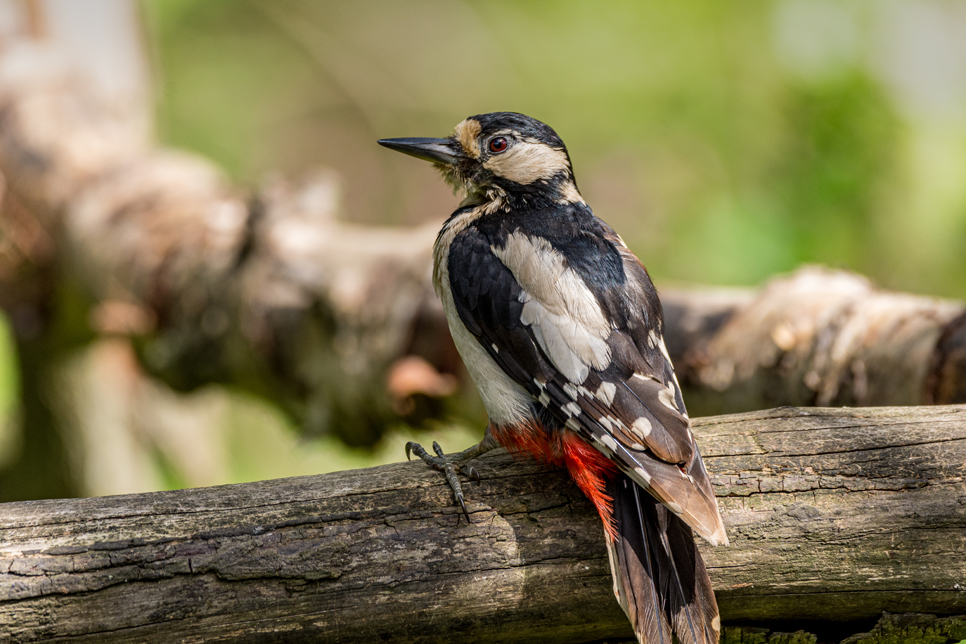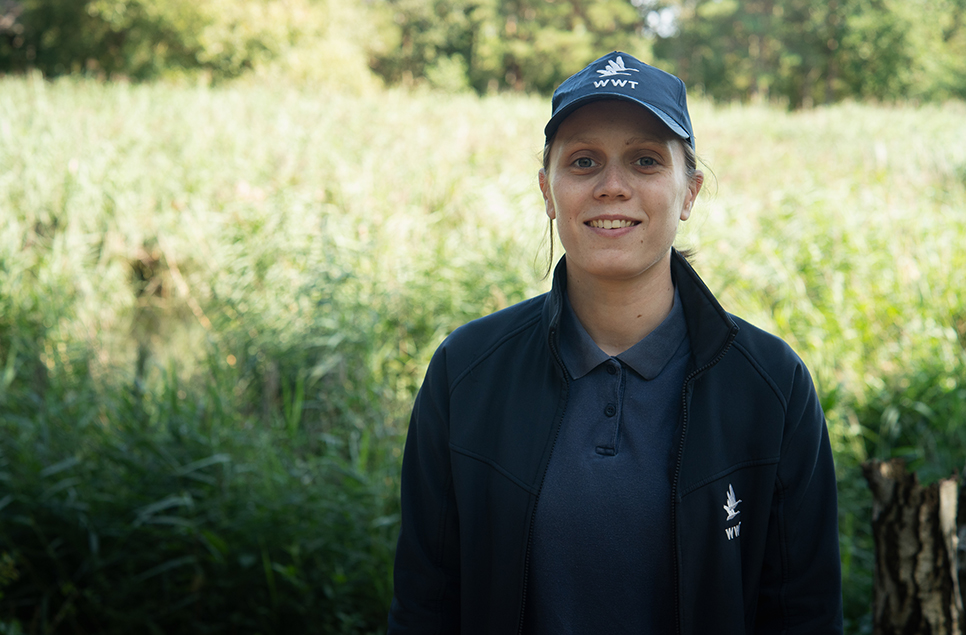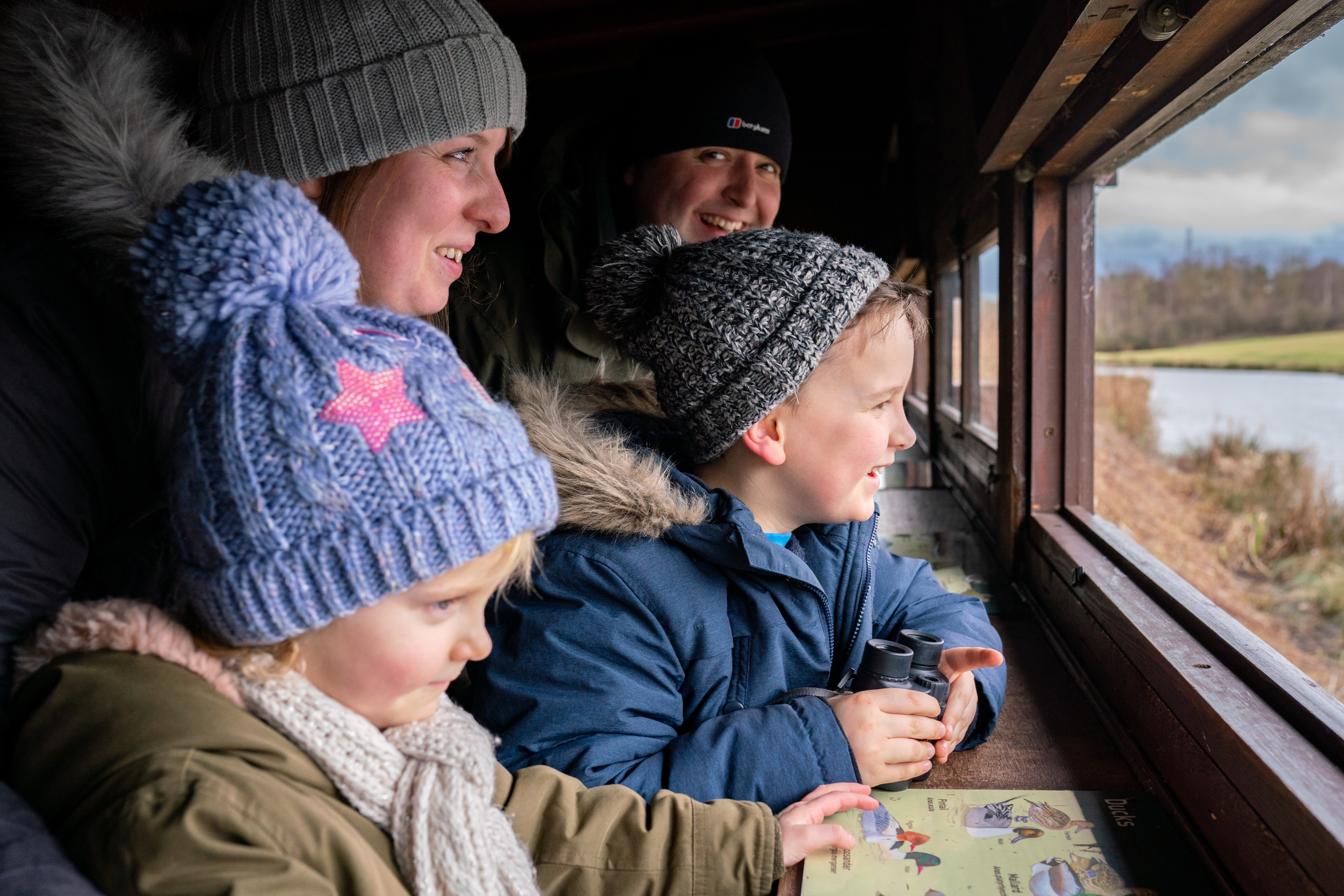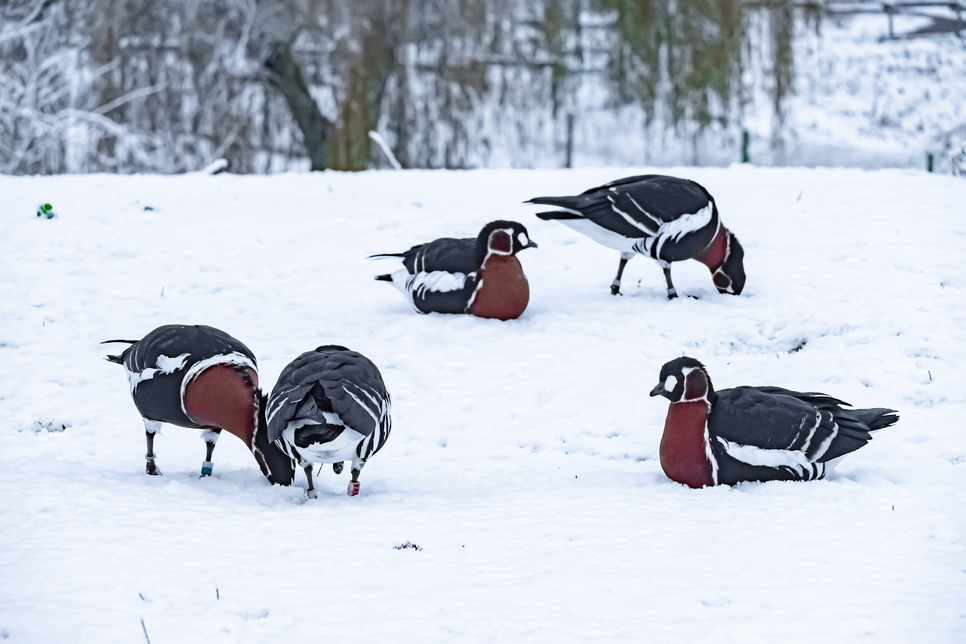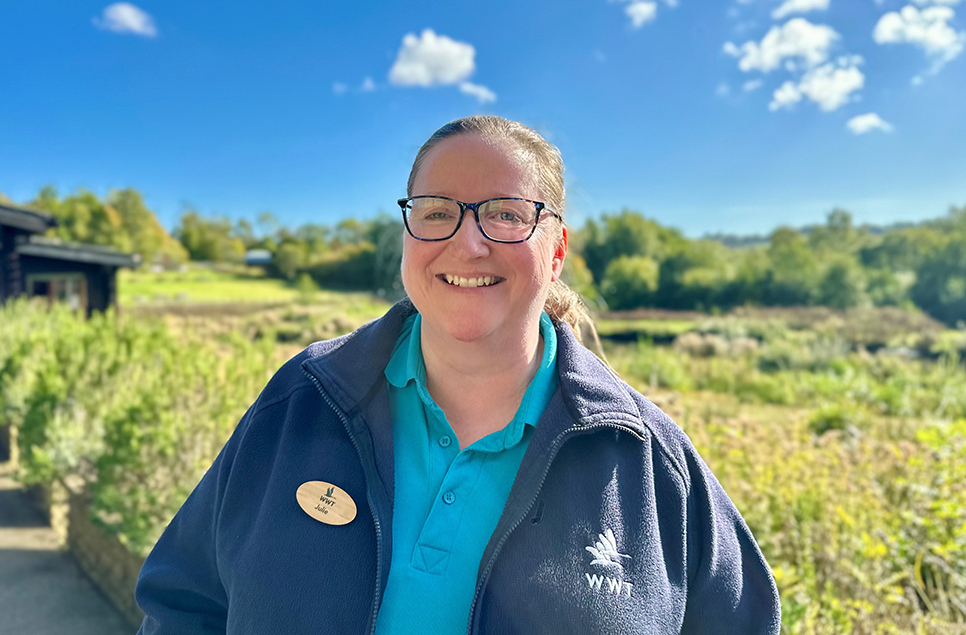Hawthorn wood hide - Drawn to Water top tips
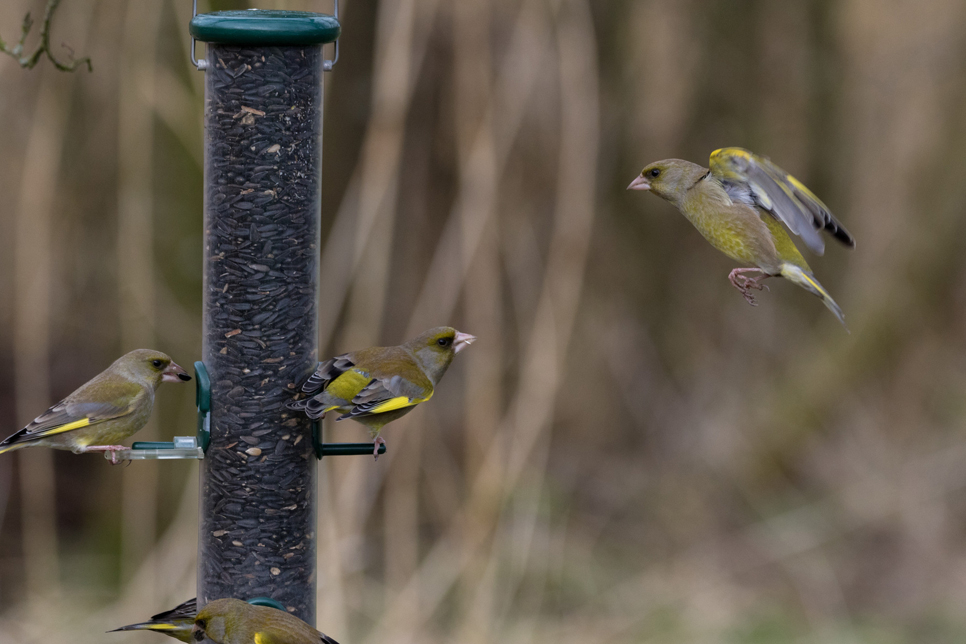
You really haven't experienced WWT Washington fully until you've been to Hawthorn wood hide!
The feeding station at Hawthorn Wood hide is magical at any time of year, with unrivalled close-up views of colourful woodland birds. It's a firm favourite with visitors and a hide that you'll remember long after you've left. Nestled in the heart of Hawthorn Wood, it boasts multiple and varied feeders for all manner of bird species, with a beautiful natural background setting that works hand in hand.
Our Drawn to Water guide is a great way to highlight key areas of our collection and wild reserve that are often overlooked. With many spots to stop, look and listen; you'll discover there's so much more to most places than first meets the eye (and ear!). It's all about pausing and taking a while to enjoy the array of nature that envelops you from the start of each and every visit to Washington Wetland Centre.
Hawthorn Wood hide highlights
Bullfinch - Need we say more? As a species that many people don't get to see, they're incredibly active and viewed pretty consistently no matter what time of day you visit. The bright peach breast and cheeks of the males stand out against any background, while the paler females don a matching black cap. As one of the larger woodland bird species that visit Hawthorn wood hide, they confidently patrol the feeders, regularly shushing other birds coming in to feed!
It's accessible! Our recently refurbished ramped entrance and large picture window offer unrivalled views down onto the feeding station for visitors with children in pushchairs or those using mobility aids. Read more about accessibility around our reserve and don't forget to give us a call if you'd like to book a electric mobility scooter.
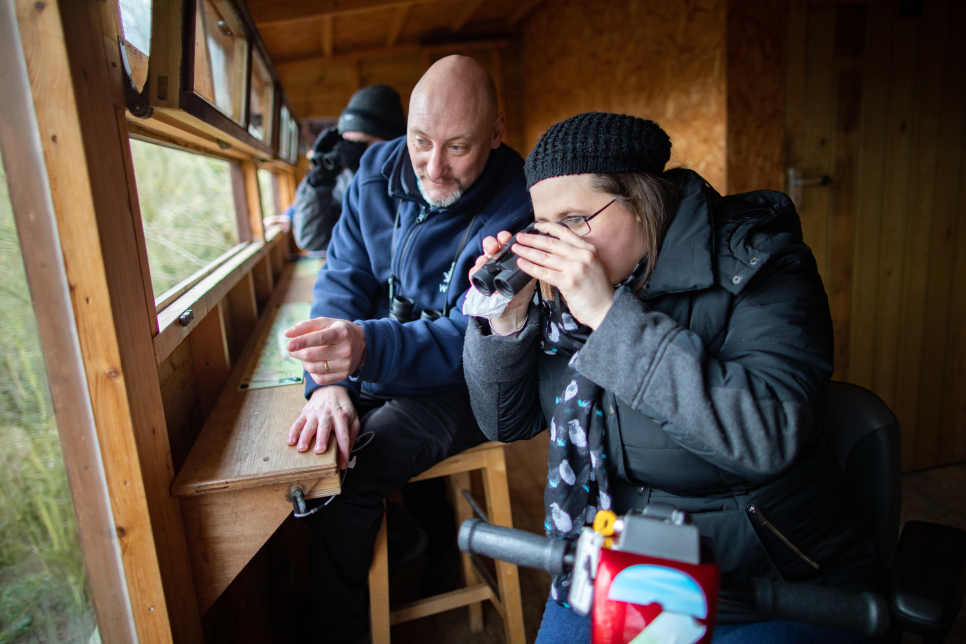
Juvenile birds are common at this time of year, with many species such as blue tit, chaffinch, greenfinch, robin and SO MANY MORE making the most of the plentiful supply of sunflower seeds, niger seeds and fat balls. If you'd like to learn a little more about how to ID juvenile birds, check out our recent blog.
Of course, we couldn't talk about Hawthorn wood hide without mentioning great-spotted woodpecker. These birds can appear and disappear in the blink of any eye, but when you do see them they're worth the wait. Their movement in flight is flitting, while they glide around trees with ease. Males display red on the back of their neck while females necks remain black. Juvenile birds have an all-red cap while all show that tell-tale red rump.
3 ways to slow down your experience
- Put your ID skills to the test! Make a note of each bird you see and think about how many you can ID. If there's some you're not sure of, use the ID charts to help you, or you could start a conversation with someone else if you're both happy to do. Being around like-minded people helps the experience and regular visitors enjoy sharing their knowledge.
- Fast-moving birds can make a great subject for nature journalling. Take a small sketchbook and a pen and make quick sketches of what you see. Add words to note what you and to emphasise how you felt when you saw them. They're great to look back on!
- If you're visiting with children, a good way to slow them down is to spot birds. Pick up a hide spotters guide and take 10 minutes to spot and ID the huge variety of woodland birds that come here, ticking them off as they go!
Ready to visit?
If you've been inspired to explore Washington Wetland Centre and experience Hawthorn wood hide, find out more and plan your visit online.
Plan your visit